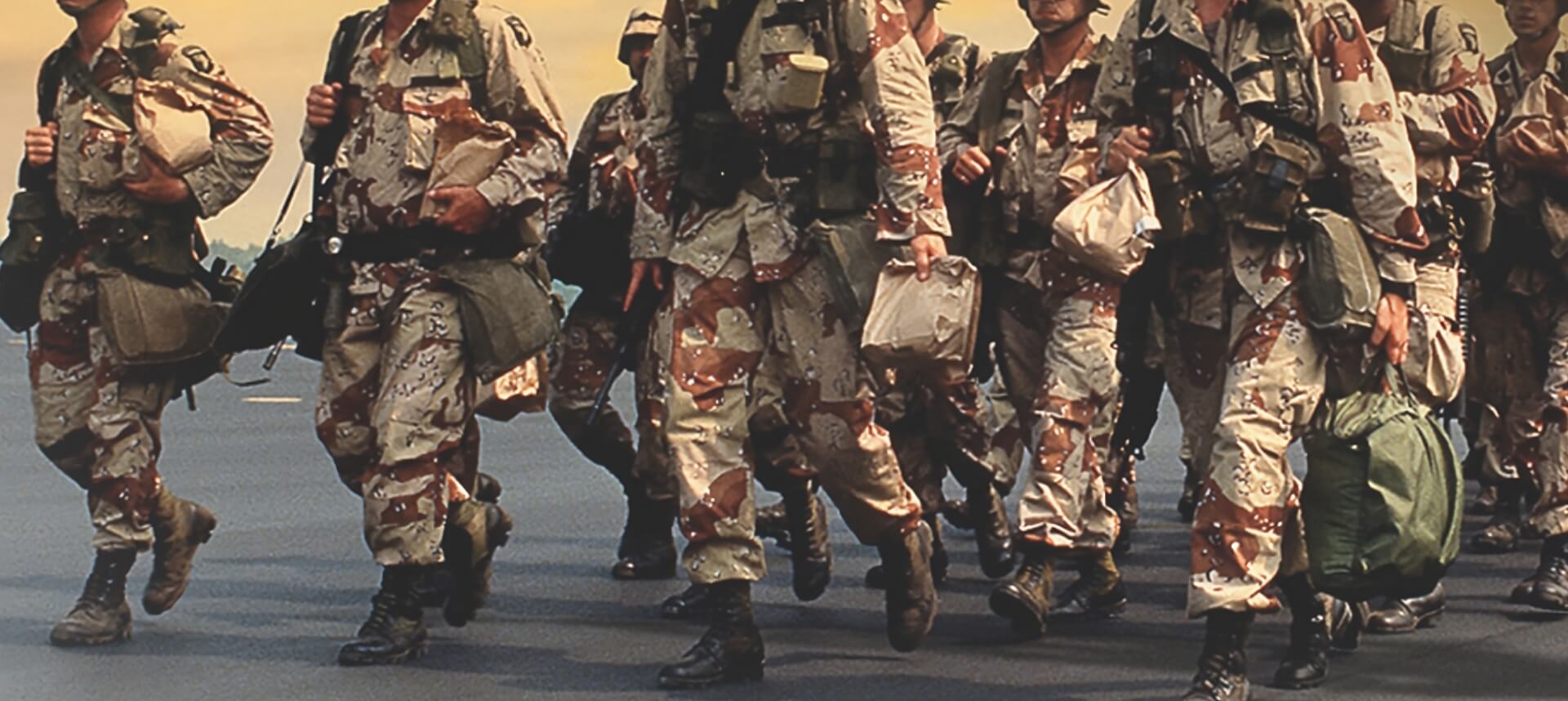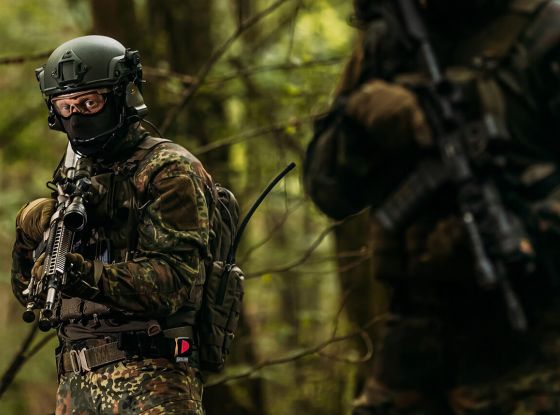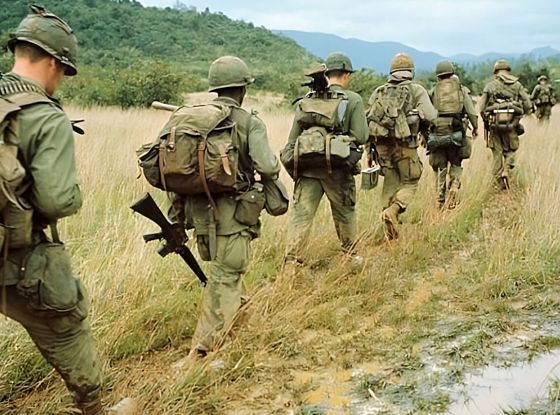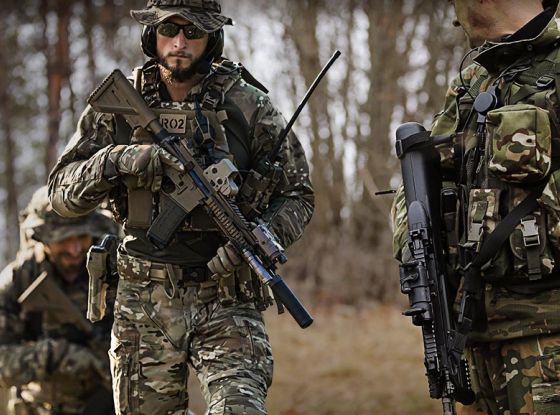In the scorching Arabian Desert, the main theatre of operation during the Gulf War of the early 1990s, soldiers faced extreme conditions that pushed them to their limits. To overcome the harsh climate, military uniforms underwent a remarkable transformation that enabled their wearers to adapt to the relentless heat, sandstorms, and chilling nights they faced throughout the conflict.
In this blog post:
Introduction
Adapting to the miserable conditions found on any battlefield is a daunting challenge for the modern tactical operator. Adaptation becomes particularly crucial when the battlefield is set in an environment as harsh and unforgiving as a desert. The Gulf War, commonly referred to as Operation Desert Storm (1990-91), presented just such a scenario. The extreme heat, vicious sandstorms, and chilling nights of the Arabian Desert demanded a new breed of military uniforms. This article will explore the changes military uniforms underwent to meet the demands imposed on soldiers by the climate encountered during the Gulf War. It will also recount some of the lessons learned that continue to influence the design and construction of tactical gear today.
Understanding the challenge
Before we delve into the solutions, it's essential to comprehend the true nature of the problem. The environment of the desert is incredibly hostile to humans. By day, the place becomes hot as an oven as the sun mercilessly beats down on the barren sands. By night, the desert turns icy cold, making it a most inhospitable realm. To this is added the constant threat of sandstorms, which can whip up with little warning—and, when they strike, they obscure vision, choke engines, and clog equipment.
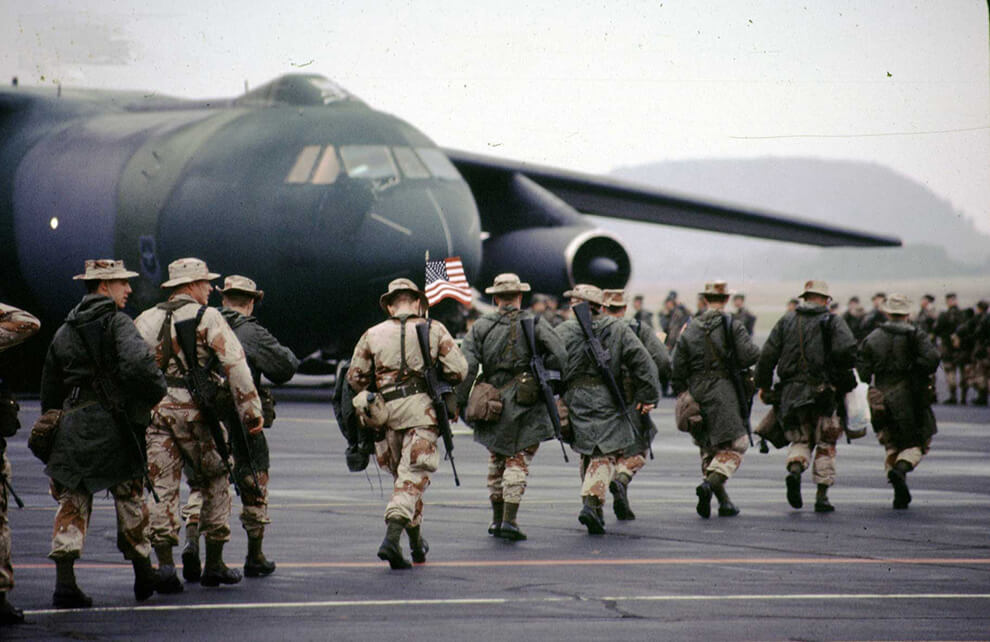
Adapting to the desert heat
When Operation Desert Shield (the staging action culminating with the commencement of Operation Desert Storm) launched in 1990, deployed forces were thrusted into an environment where daytime temperatures could reach a scorching 50 degrees Celsius (122 degrees Fahrenheit). The heat made soldiers more than uncomfortable; it posed serious threats to their soldier health and ability to function.
In response, the U.S. military introduced the Desert Battle Dress Uniform (DBDU), popularly known as the "chocolate chip" uniform due to its unique camouflage pattern. The DBDU was lightweight and made of breathable cotton, designed to wick away sweat and provide at least some relief from the searing desert heat. Moreover, the loose-fitting uniform helped wearers feel cooler by allowing more air to circulate between the fabric and their skin.
This design was not merely about comfort; it was also about survival. The desert’s high temperatures created a very real risk that soldiers could suffer heatstroke, a potentially fatal condition. This risk was greatly reduced by providing a uniform that could help regulate body temperature and wick away sweat.
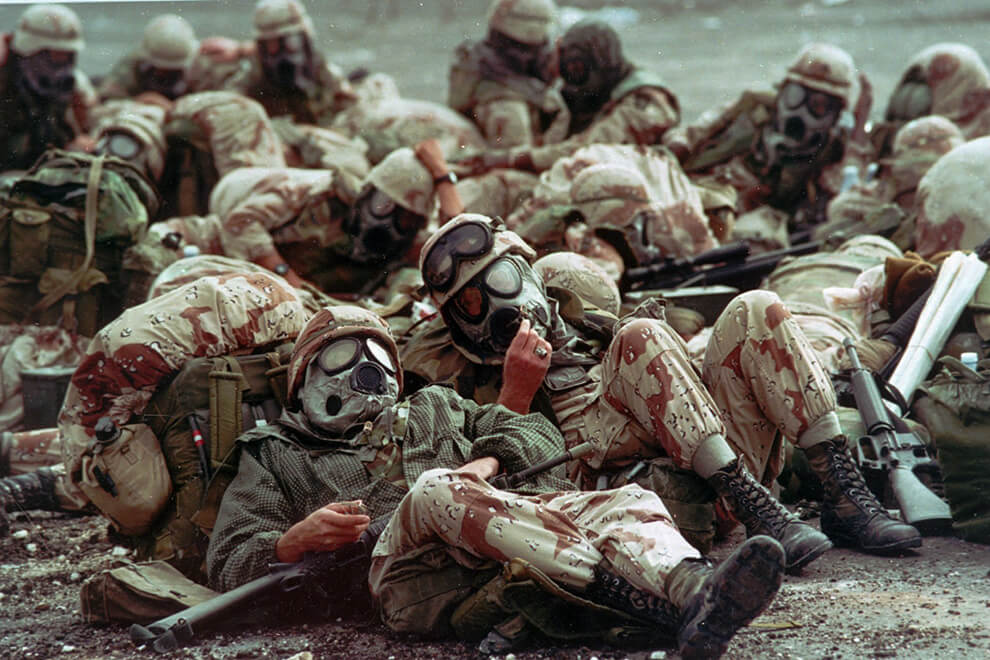
Braving the sandstorms
Heat is far from the only enemy that calls the desert its home. There is also the dreaded weather phenomenon known as the sandstorm. In the Arabian Desert, sandstorms are a frequent occurrence. They have a penchant for turning normally crystal blue skies into a thick brownish pawl of dust and flying particulates. Even a mild sandstorm can obscure vision, damage equipment, and cause respiratory problems.
To protect soldiers from these effects of sandstorms, the U.S. military incorporated goggles, and headscarves with the uniform. These accessories could be quickly donned to shield the face and eyes at the first sign of a sandstorm. (Interestingly enough, the DBDU’s "chocolate chip" pattern worked all the better during sandstorms—the swirling clouds of dust helped wearers blend in more thoroughly with the sandy backdrop of the desert, providing them an additional tactical advantage).
Here, again, the design was about more than simply comfort. Wearer performance was also a consideration, for on the battlefield, vision is crucial—and nothing in nature is quite so effective at depriving soldiers of vision as a sandstorm. By adding goggles and headscarves to the uniform, the danger that soldiers might lose their ability to see was eliminated (and, with it, a potentially severe disadvantage in combat).
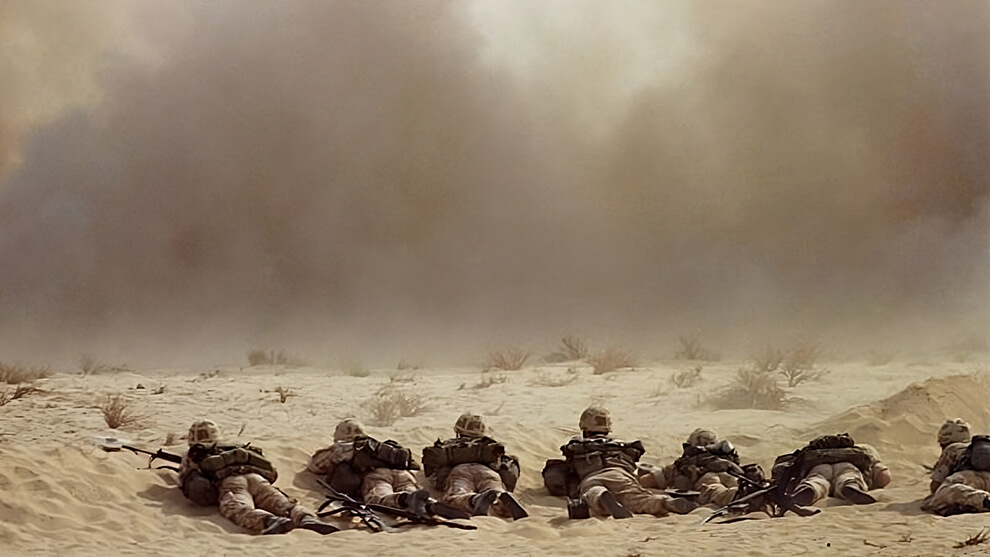
The desert night's chill
While daytime temperatures in the desert can be unbearably hot, those at night can be just the opposite—unbearably cold. Accordingly, the same uniform capable of providing relief from the heat while the sun shone brightly overhead had to also be capable of providing warmth against the cold of the starlit desert night.
The solution? Layering. The form that it took was the Cold Weather Desert Night Camouflage Parka, a lightweight yet insulating layer that could be worn over the DBDU. The parka’s camouflage featured a unique grid pattern designed to foil enemy night-vision technology by causing the garment wearer's silhouette to break up, thereby enhancing concealment during night operations.
This solution once again demonstrated the U.S. military’s preference for innovative approaches. Rather than issuing separate uniforms—one for day and one for night—they developed a layered system that permitted the wearer to adapt to changing conditions. This not only enhanced comfort and survivability but also eliminated the logistical challenge that would have arisen from supplying multiple uniforms.
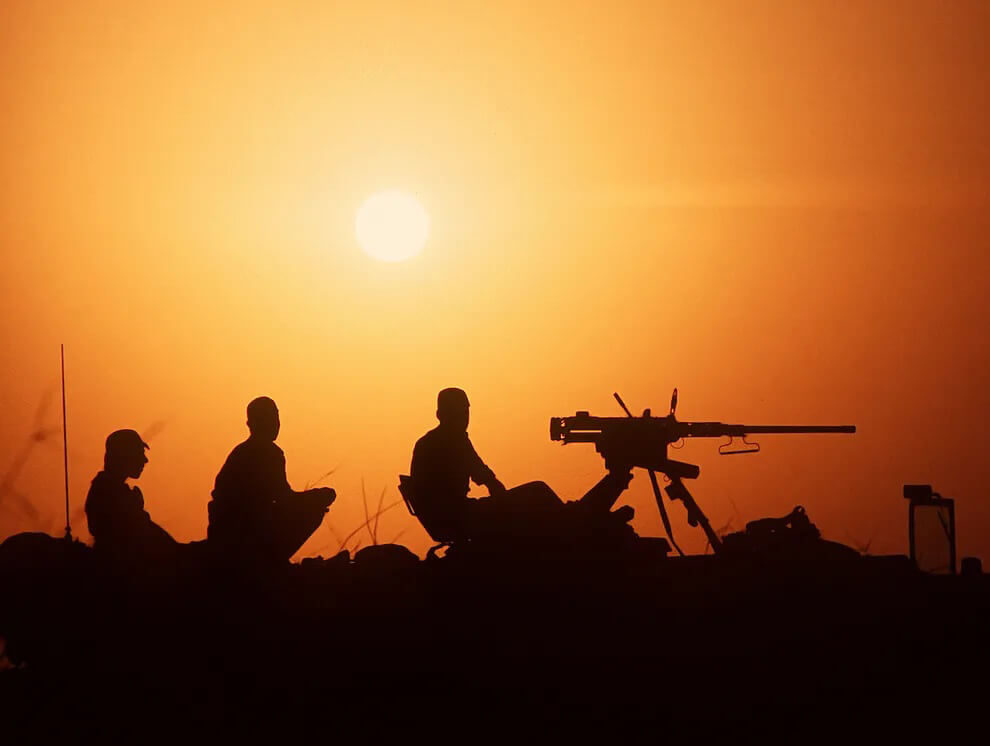
Lessons for today's tactical operators
The lessons taught by the garment modifications made for Desert Storm remain valid more than 30 years later. Indeed, operators today can learn from them still.
For instance, the principle of layering remains a key strategy for managing the effects that operating in challenging climates can have on soldiers. That is why one often finds modular systems built into modern tactical gear—to allow operators to add or remove layers as warranted by current conditions and in so doing help ensure they enjoy maximum comfort and performance, weather be damned.
Similarly, the introduction of goggles and headscarves as a defence against sandstorms led to the development of more comprehensive protective gear. Today's operators thus have access to a variety of face shields and goggles designed to protect against a wide range of environmental hazards (as well as provide ballistic protection and—with the addition of filtration systems—protection against chemical and biological threats.)
Yet another lesson from the Gulf War with applicability today: the "chocolate chip" pattern of the DBDU underscores the importance of environment-specific camouflage. Hence, modern uniforms come in patterns and colours to match many different environments and thereby provide effective concealment in all of them. Whether it's the digital camo used in urban environments or the MultiCam patterns used in diverse terrains, the lesson of Desert Storm is clear: effective camouflage can provide a significant tactical advantage.

The legacy of Desert Storm
The Gulf War was a watershed of sorts when it came to the evolution of military uniforms in that it presented to the makers of warfare garb a unique set of challenges requiring innovative solutions. The uniforms developed for Desert Storm were not merely about providing comfort in a harsh environment. More importantly, they were also about giving wearers a better shot at surviving battlefield engagements, helping them maintain operational effectiveness during deployment start to finish, and bolstering their overall tactical edge.
These uniforms stand as a testament to the ingenuity of the U.S. military. They demonstrated a clear understanding of the challenges presented by the desert environment and showcased the ability of their designers to develop effective solutions. Today's tactical operators—be they serving in the military, law enforcement, or private security—can draw on these lessons to enhance their own effectiveness and survivability.
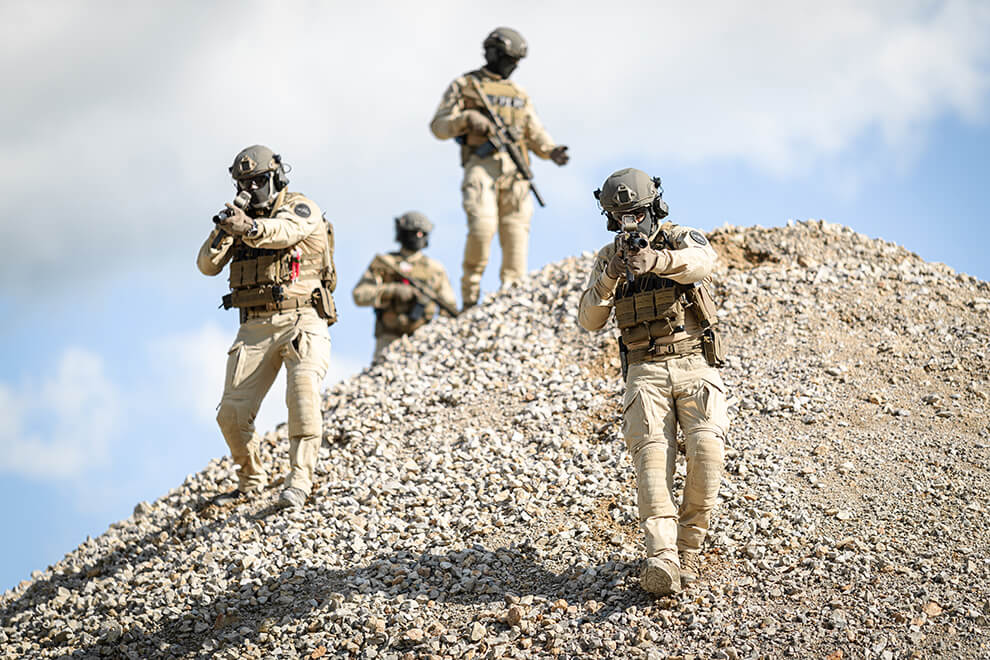
Hot weather gear of the future
Like the Gulf War uniforms we have been discussing, UF PRO tactical clothing is designed to meet the demands of extreme climates—in particular, providing optimal comfort and performance in scorching hot environments. Our innovative approach to counteract the adverse effects intense heat and humidity can have on operators focuses on garment breathability, moisture-wicking, and lightweight construction.
Accordingly, the materials used in the construction of UF PRO garments are not your typical fabrics. They are chosen specifically for their superior breathability and moisture-wicking properties. For instance, our clothing incorporates advanced synthetic blends that are lightweight and allow for efficient air circulation. These materials are exceptionally good at drawing sweat away from the body even under the most sweltering environmental conditions.
Strategically placed air vents are another key feature of UF PRO tactical clothing. These vents are positioned after careful study and consideration to maximise airflow and supplement breathability, thereby preventing heat accumulation in those areas most prone to such buildup.
Striker ULT Combat Pants embody all the features that make UF PRO tactical clothing ideal for operations in hot weather. For one, Striker ULT Combat Pants are constructed from a lightweight, breathable, and moisture-wicking synthetic blend aimed at delivering superior comfort and supporting optimal performance in extreme heat. They also incorporate the strategically placed air vents mentioned above to maximise airflow in areas where heat accumulation would otherwise be a problem. This thoughtful design allows for the kind of efficient body temperature regulation and sweat management required to help operators stay cool and dry despite oppressive heat and humidity. The material itself is highly flexible, which allows wearers to move about unhindered—but by the same token does not compromise on protectiveness. In essence, Striker ULT Combat Pants represent a perfect fusion of innovation and functionality, making them an excellent choice for operators working in hot climates.
The use of high-quality materials and advanced technology guarantees durability and protection without loss of flexibility and freedom of movement. The same is true of UF PRO shirts. However, whether we’re talking about shirts or pants, UF PRO tactical clothing is engineered to keep operators comfortable and focussed so that they can perform at their best even in the most challenging conditions.
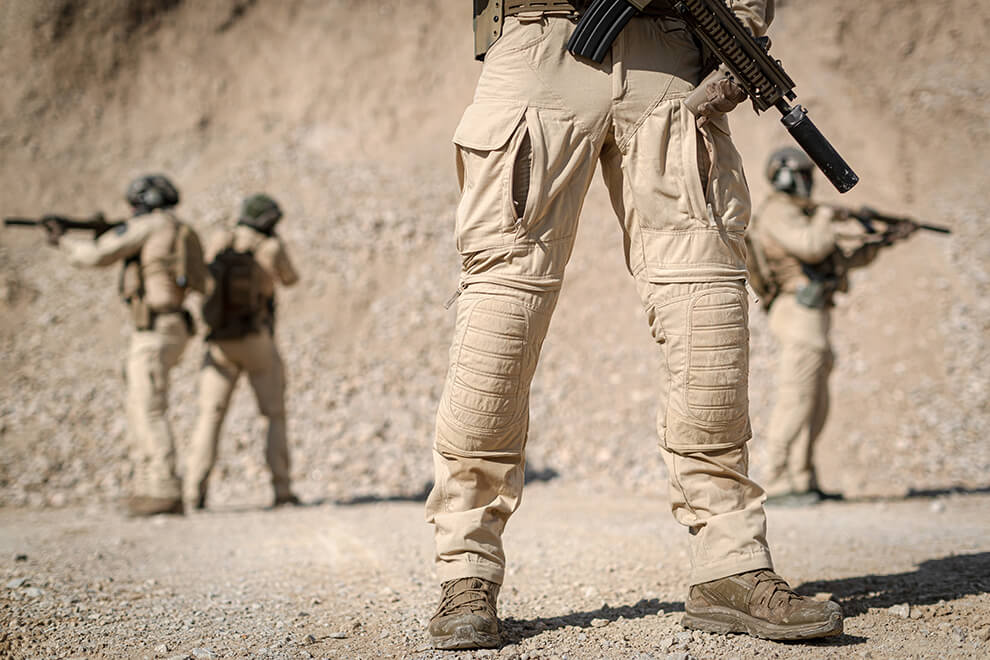
Conclusion
The garment modifications made for the troops deployed in Operation Desert Shield/Storm represent a significant milestone in the evolution of military uniforms. Faced with the brutally harsh climate of the Arabian Desert, the U.S. military responded with innovation. The result of that innovation was uniforms designed to better protect soldiers from the remorseless daytime heat, surprise sandstorms, and bone-chilling cold desert nights. These modifications continue to influence the design of tactical gear today, providing valuable lessons for today's operators.
Whether it's the importance of layering, the value of environment-specific camouflage, or the need for effective protection against environmental hazards, the lessons of Desert Storm continue to resonate. They serve as a reminder of the importance of nimbleness in the face of adversity, of being able to agilely adapt one’s thinking as conditions and circumstances on the ground require. Such is the basis for innovation—a capacity at the very heart of our tactical clothing design today.

